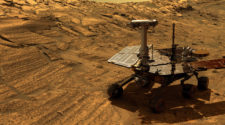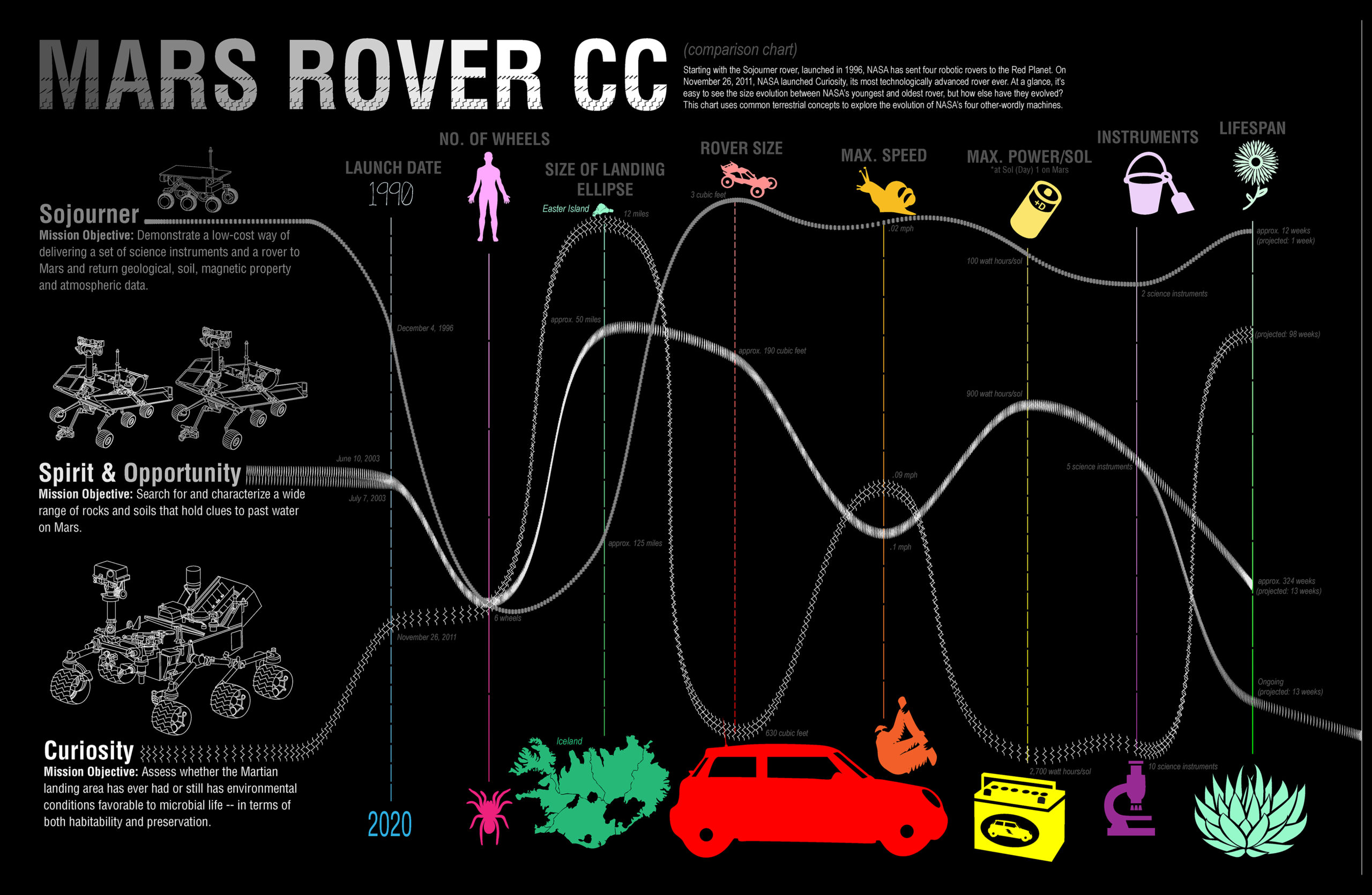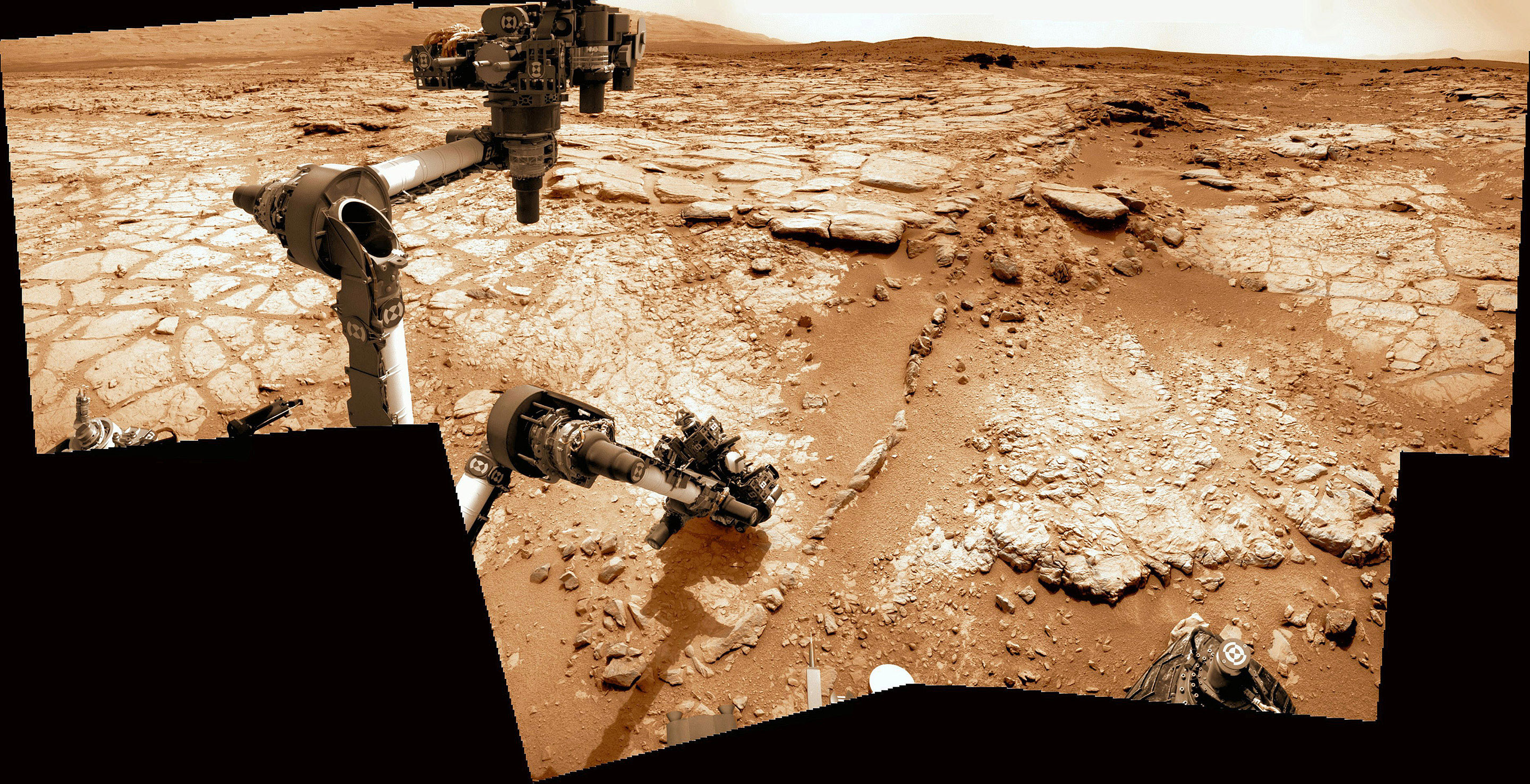
As NASA’s Curiosity rover begins her eighth month exploring the Red Planet since the nail-biting touchdown inside Gale Crater on Aug. 5, 2012, she has made the most amazing finding thus far.
After analyzing the first powder ever drilled from the interior of a Martian rock, Curiosity discovered key chemical ingredients necessary for life to have thrived on early Mars billions of years ago.
Collecting those first particles bored from inside a rock on a planet beyond Earth marks a historic feat in humankind’s exploration of the cosmos – and was crucial for achieving Curiosity’s goal to determine whether Mars ever could have supported microbial life, past or present.
Curiosity has now achieved her goal of discovering a habitable environment on the Red Planet, mission scientists reported at a mid March briefing held at NASA headquarters in Washington, D.C.
Data collected by Curiosity’s two analytical chemistry labs (SAM and CheMin) confirm that the gray powder collected from inside the sedimentary rock of mudstone where the rover is now exploring – near an ancient Martian stream bed – possesses a significant amount of phyllosilicate clay minerals; indicating an environment where Martian microbes could once have thrived in the distant past.
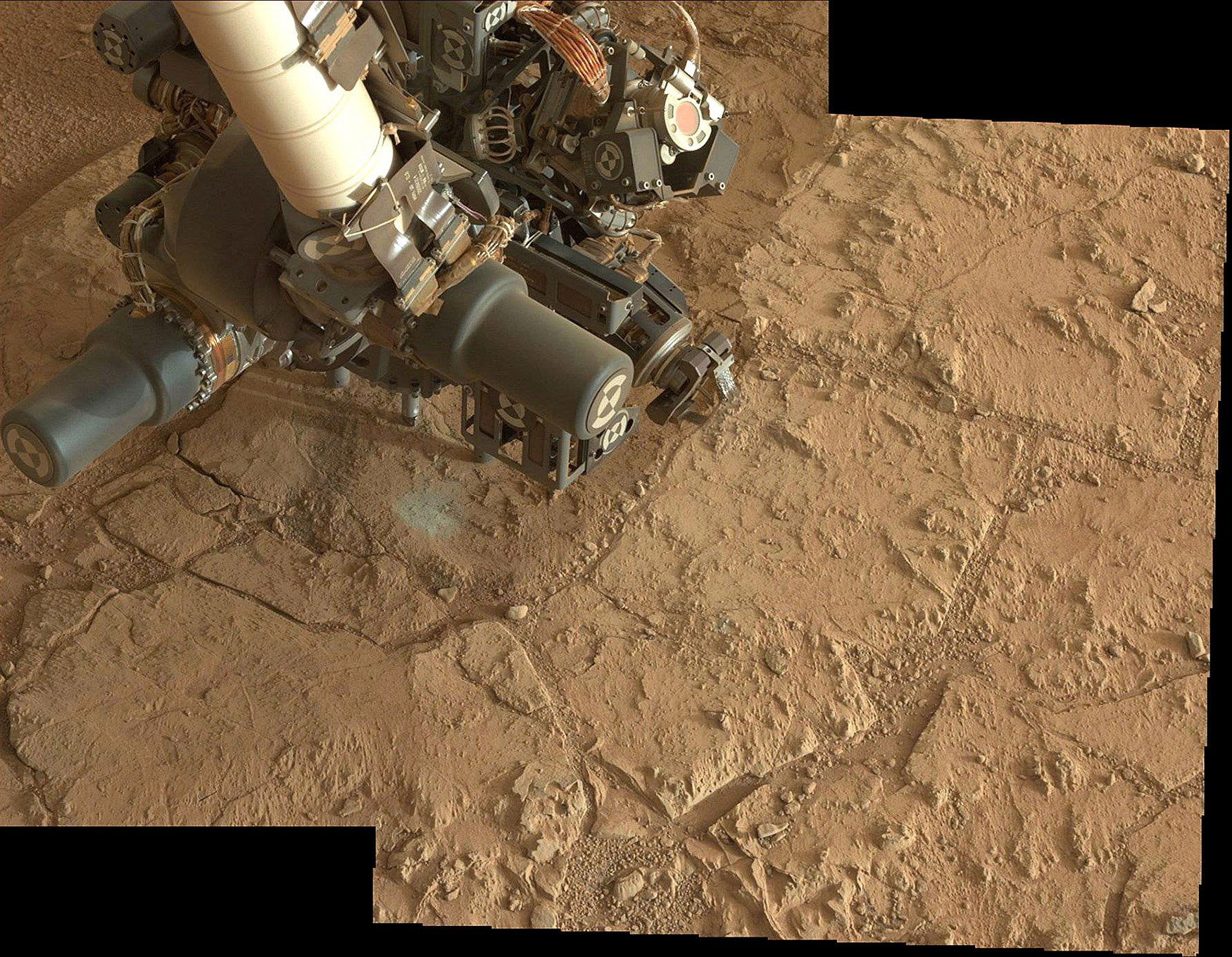
Clay minerals form in neutral water which is much more conducive to supporting possible Martian life forms compared to the highly acidic watery environments found by NASA’s Spirit and Opportunity Mars rovers over the past decade.
“We have found a habitable environment which is so benign and supportive of life that probably if this water was around, and you had been on the planet, you would have been able to drink it,” said John Grotzinger, the chief scientist for the Curiosity Mars Science Laboratory mission at the California Institute of Technology in Pasadena, Calif.
Curiosity cored the rocky sample from a fine-grained, sedimentary outcrop, named John Klein, inside a shallow basin named Yellowknife Bay, and delivered pulverized powder to the Sample Analysis at Mars (SAM) and Chemistry and Mineralogy (CheMin) instruments inside the robot.
On Feb. 8, 2013 (mission Sol 182), Curiosity used the rotary-percussion drill mounted on the tool turret at the end of the seven-foot (2.1 meter) long robotic arm to bore a circular hole about 0.63 inch (16 mm) wide and about 2.5 inches (64 mm) deep into John Klein that produced a slurry of gray tailings.
“For the first time we are examining ancient rocks that have not been exposed to the Martian surface environment, and weathering, and preserve the environment in which they formed,” said Joel Hurowitz, Curiosity sampling system scientist at JPL.
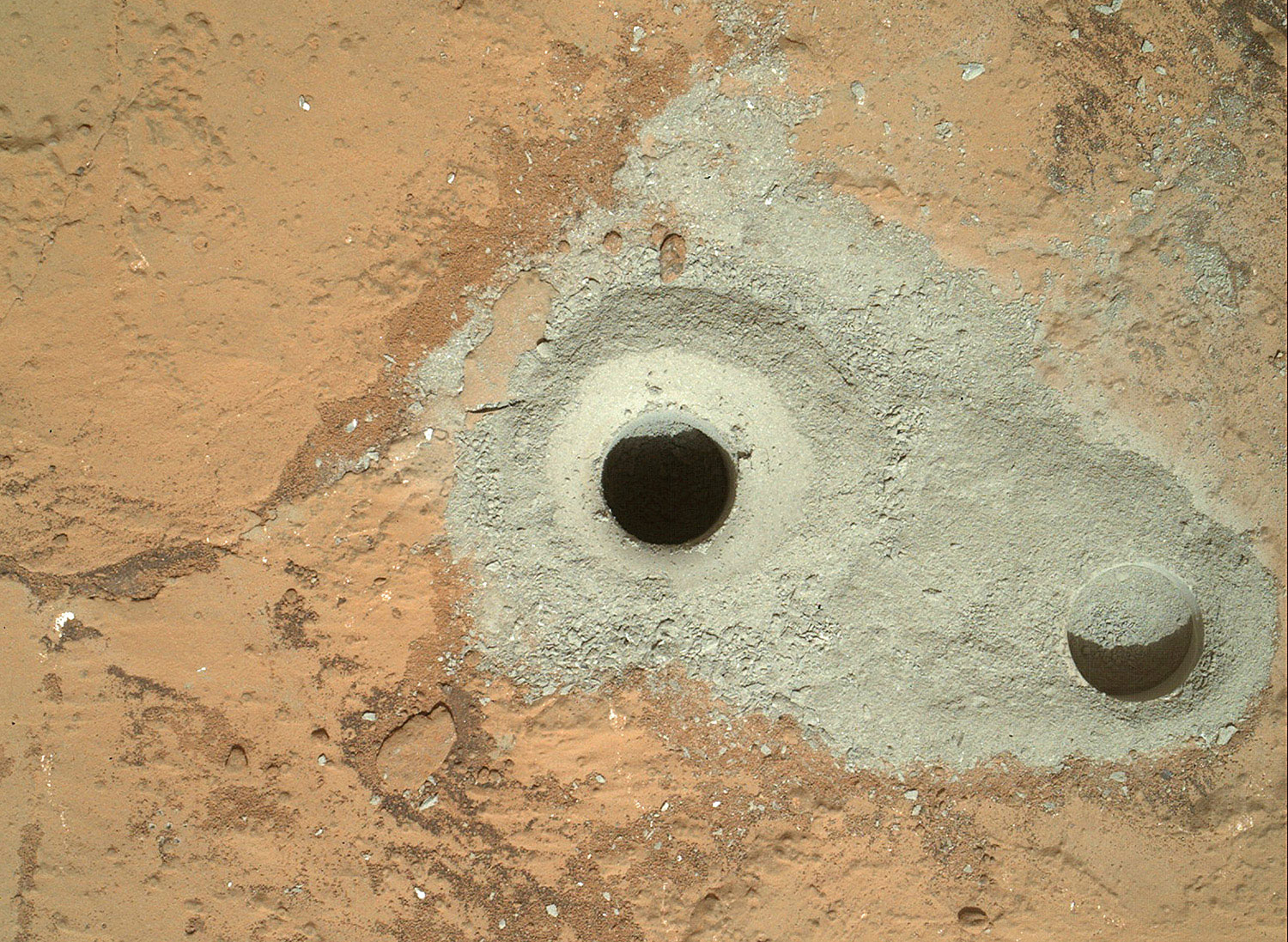
This is a key point because subsequent oxidation reactions can destroy organic molecules and thereby potential signs of habitability and life.
The gray colored tailings give a completely fresh insight into Mars that offers a stark contrast to the prevailing views of reddish-orange rusty, oxidized dust. One theory is that it might be related to different oxidations states of iron that could potentially inform us about the habitability of Mars inside the rover’s Gale Crater landing site.
The presence of abundant phyllosilicate clay minerals in the John Klein drill powder indicates a fresh water environment. Further evidence derives from the veiny sedimentary bedrock shot through with calcium sulfate mineral veins that form in a neutral to mildly alkaline pH environment.
“Clay minerals make up at least 20 percent of the composition of this sample,” said David Blake, principal investigator for the CheMin instrument at NASA’s Ames Research Center in Moffett Field, Calif.
The rovers long robotic arm fed aspirin-sized samples of the gray, pulverized powder into the miniaturized CheMin SAM analytical instruments on Feb. 22 and 23, or Sols 195 and 196. The samples were analyzed on Sol 200.
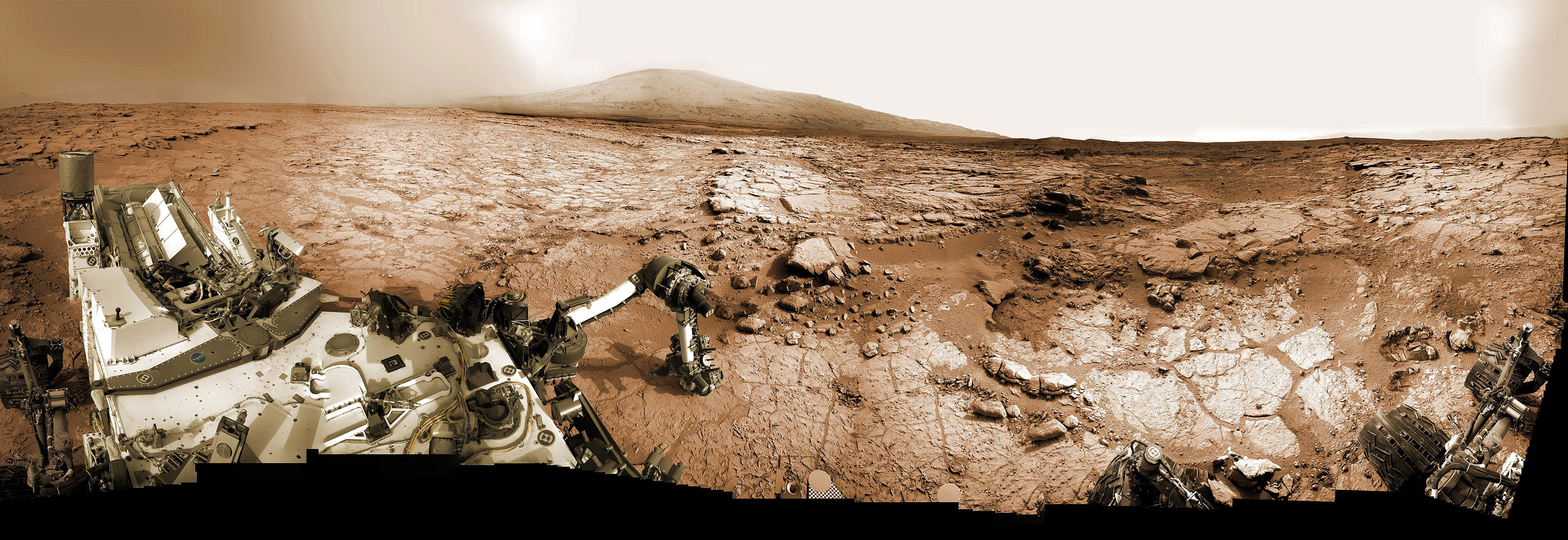
Scientists were able to identify carbon, hydrogen, oxygen, nitrogen, sulfur and phosphorus in the sample – all of which are essential elements for life as we know it based on organic molecules. But no significant levels of organics have been detected yet.
“The range of chemical ingredients we have identified in the sample is impressive, and it suggests pairings such as sulfates and sulfides that indicate a possible chemical energy source for micro-organisms,” said Paul Mahaffy, principal investigator of the SAM suite of instruments at NASA’s Goddard Space Flight Center in Greenbelt, Md.
“The rock drilling capability is a significant advancement. It allows us to go beyond the surface layer of the rock, unlocking a time capsule of evidence about the state of Mars going back three or four billion years,” said Louise Jandura of JPL and Curiosity’s chief engineer for the sampling system. “Using our roving geologist, Curiosity, the scientists can choose the rock, get inside the rock and deliver the powdered sample to instruments on the rover for analysis.”
The high powered drill was the last of Curiosity’s 10 state-of-the-art instruments still to be checked out and put into full operation.
The discovery of phyllosilicates on the floor of Gale crater was unexpected, and has delighted the scientists. Based on spectral observations from Mars orbit. Grotzinger told me previously that phyllosilicates had only been detected in the lower reaches of Mount Sharp, the three mile (5 km) high mountain that is Curiosity’s ultimate destination.
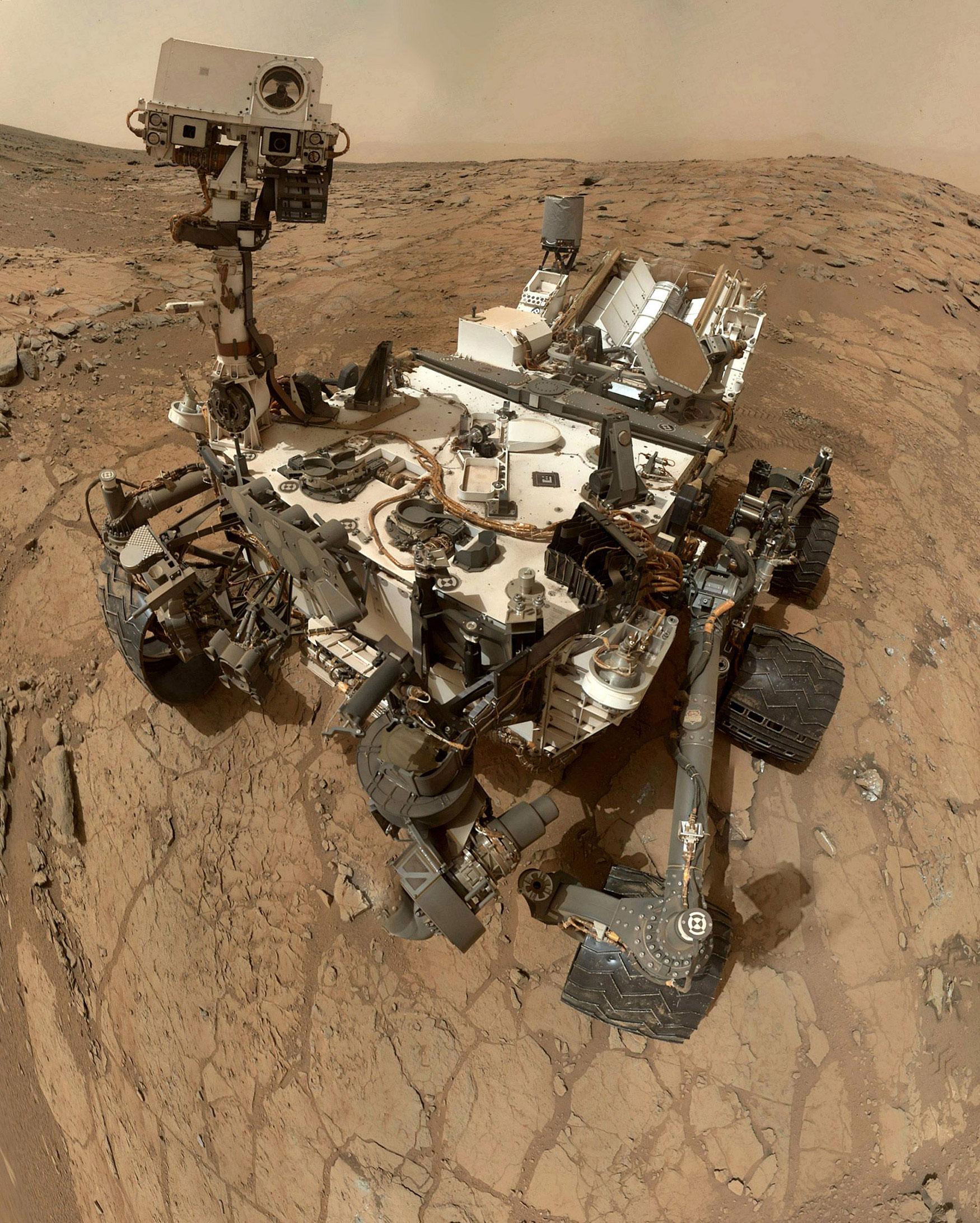
Finding the phyllosilicates so soon at Yellowknife Bay is a tribute to the team and validates the selection of Gale Crater as the landing site.
Grotzinger said that Curiosity will remain in the Yellowknife Bay area for several additional weeks or months to fully characterize the area. The rover will also conduct at least one more drilling campaign to try and replicate the results, check for organic molecules and search for new discoveries.
The Curiosity science team believes that the current work area at Yellowknife Bay experienced repeated percolation of flowing liquid water billions of years ago when Mars was warmer and wetter – and therefore was more hospitable to the possible evolution of life.
So far Curiosity has snapped more than 48,000 images, traveled nearly 0.5 miles, conducted 25 analysis with the APXS spectrometer and fired over 12,000 laser shoots with the ChemCam instrument.
Eventually, the six-wheeled mega rover will set off on the nearly year long trek to the base of Mount Sharp.

